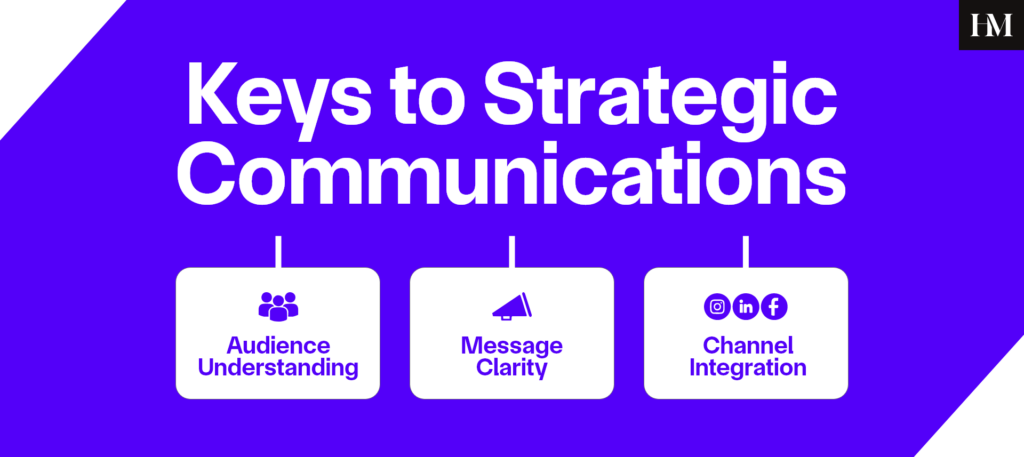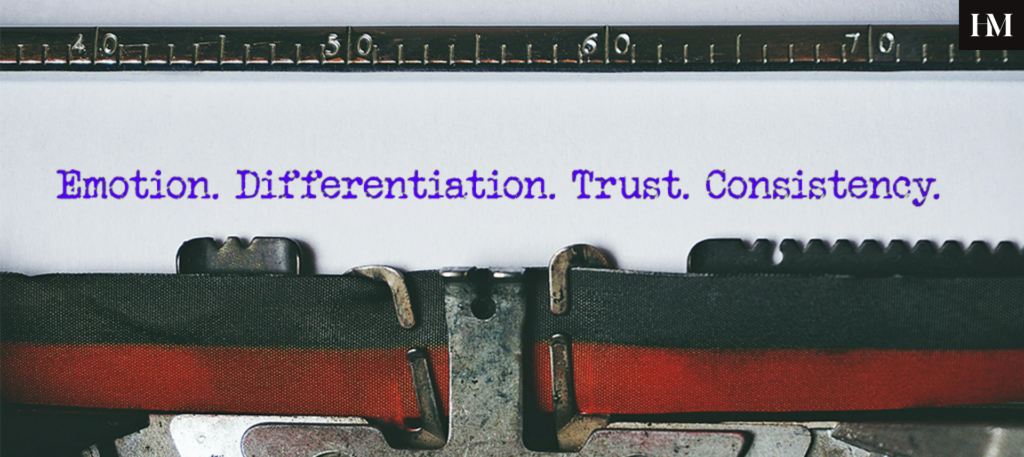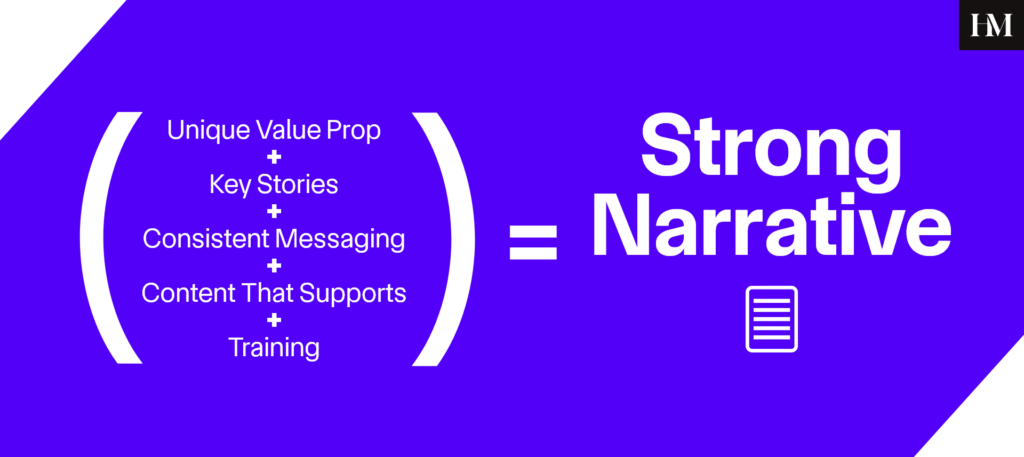For over three decades, we’ve watched countless clients reach new customers, markets, and sales objectives through the power of strategic communication. What’s the secret? Effective strategic communication in marketing is about crafting messages that make your audience feel understood, supported, and empowered.
Effective communication can mean the difference between good and great marketing. It often comes down to how effectively a brand communicates its value. Strategic communications in marketing is about crafting intentional, purposeful communication that drives real results. Let’s look into what makes strategic communications tick and how you can leverage it for your brand’s success.
Understanding Strategic Communications
Think of strategic communication as the architect of your brand’s story. It’s the intentional framework that ensures every message, campaign, and interaction aligns with your broader business objectives. Unlike tactical communication, which focuses on day-to-day messaging, strategic communication takes a bird’s-eye view of your entire marketing ecosystem.
What makes it truly strategic? It’s the difference between simply posting on social media and knowing exactly why you’re posting, who you’re trying to reach, and how this piece fits into your larger brand narrative. Strategic communications combines careful planning, clear objectives, and measurable outcomes to create meaningful connections with your audience.
A successful strategic communications plan requires the following:
- Clear brand messaging
- Alignment with organizational goals
- Deep understanding of target audiences
- Defined metrics for success
- Flexible adaptation strategies
- Integrated channel approach
Key Components of Effective Marketing Strategies
Effective strategic communication isn’t about being everywhere—it’s about being purposeful everywhere you are. So, how do you build this kind of purposeful communication strategy? It starts with understanding the fundamental building blocks.

- Audience Understanding: Deep knowledge of who you’re talking to, what they care about, and how they prefer to receive information. This involves:
- Demographic and psychographic analysis
- Behavior pattern recognition
- Pain point identification
- Communication preference mapping
2. Message Clarity: Crystal-clear communication that resonates with your audience and aligns with your brand values through:
- Consistent tone and voice
- Value-driven messaging
- Clear call-to-action
- Emotional connection points
3. Channel Integration: Through integrated marketing communication, we ensure thoughtful selection and coordination of marketing channels to maximize impact by:
- Identifying optimal channel mix
- Coordinating cross-channel messaging
- Maintaining consistency across platforms
- Measuring channel effectiveness
Market research plays a vital role in strategic planning. Good market research reveals the real challenges your dealers face. Maybe they’re struggling to explain your product’s premium price point. Or they need better ways to showcase your products’ durability. Understanding these pain points means you can create messages that actually help them sell.
Developing a Compelling Brand Narrative
Your brand story encompasses why you exist and why that matters to your audience. A compelling brand narrative:
- Creates emotional connections with your audience
- Differentiates you from competitors
- Builds trust and credibility
- Drives consistent messaging across all channels

Consider how brands like Warby Parker and YETI have built their success on products AND stories that connect with their audiences’ values and aspirations. Their narratives go beyond features and benefits to create meaningful emotional connections.
Brands as Storytellers
Warby Parker built its success by weaving social impact into its brand story. Their “Buy a Pair, Give a Pair” program resonates deeply with millennial and Gen Z consumers’ desire to make a positive impact through their purchases. Warby Parker tells the story of each pair of glasses, showing how they train local entrepreneurs in developing countries to conduct basic eye exams and sell affordable glasses in their communities.
Similarly, YETI has masterfully crafted a narrative around American manufacturing quality and engineering innovation. Rather than just listing technical specifications, they tell the story of their rotomolded construction process – a technique borrowed from whitewater kayak manufacturing – showing how this method creates virtually indestructible products.
Through their “YETI Presents” film series, they demonstrate their rigorous testing processes, from dropping coolers from helicopters to letting grizzly bears try to break in. These dramatic demonstrations resonate deeply with customers who need gear they can trust in extreme conditions.
Beyond specs and features, YETI connects every manufacturing decision to real-world use, showing why they chose specific grades of stainless steel, particular gasket designs, and extra-thick walls. They’ve turned what could be a technical purchase decision (‘Which cooler has the best insulation?’) into a story about engineering excellence and uncompromising standards that align with their customers’ values of quality, performance, and reliability.
Telling the Story
Building a strong narrative requires:
- Understanding your brand’s unique value proposition
- Identifying key storytelling elements
- Creating consistent brand messaging guidelines
- Developing content that supports your story
- Training team members on narrative delivery
When these elements come together in an integrated marketing communication strategy, your brand story becomes the foundation for every customer interaction, marketing message, and business decision you make.

Integrating Digital Marketing Techniques
Digital channels require a deliberate balance. You need to maintain consistency across all touch points while adapting to each platform’s unique demands. One size definitely doesn’t fit all, but your core message needs to stay rock solid.
Effective digital integration means:
- Creating cohesive experiences across all digital touchpoints
- Leveraging data analytics for continuous improvement
- Maintaining authenticity while scaling communication efforts
- Adapting quickly to changing platform dynamics
The key is not just being present on digital channels but ensuring each platform serves a strategic purpose in your overall communications plan. This includes:
Social Media Strategy
- Tailor your message to each platform – technical specs and case studies for LinkedIn, behind-the-scenes looks at manufacturing for Instagram
- Set clear guidelines for responding to comments and messages
- Develop step-by-step protocols for handling potential issues
- Use platform analytics to understand what resonates with your audience
Digital Content Distribution
- Build your website content around what your customers are searching for
- Share your expertise through guest posts and industry publications
- Use your best content across multiple channels, adapted for each
- Focus on reaching decision-makers where they spend their time
Best Practices for Content Marketing
Content marketing needs to be purposeful and value-driven in strategic communication. Through integrated marketing communication practices, we’ve seen how quality content can transform brand perception and drive meaningful engagement.
Audience-First Content Creation
Success in content marketing starts with putting your audience’s needs at the forefront. For vehicle component manufacturers, this might mean creating detailed technical documentation that helps maintenance teams understand installation processes or developing comprehensive training materials that make it easy for dealers to explain complex suspension systems to fleet managers. When service technicians can quickly access the right information and sales teams have the tools to demonstrate ROI to procurement officers, you’re solving real business challenges.
Your content strategy should prioritize:
- Creating helpful content that serves your audience’s needs first
- Developing a consistent content calendar that aligns with your strategic goals
- Measuring and adapting based on performance metrics
- Maintaining quality while scaling production
When one of our manufacturing clients needed to launch a new line of RV components, we went beyond creating product specs and feature lists. We developed a comprehensive content package that included dealer training videos, customer story spotlights, and seasonal promotion guides. This approach educated dealers about the updated solutions and gave them the tools they needed to effectively sell to their customers.
Building Your Content Framework
A strong content marketing framework doesn’t happen by accident. Consider how Caterpillar built trust through their “Built For It” content series. Rather than just showcasing equipment specs, they created dramatic demonstrations – like their “Stack” video showing excavators playing a giant Jenga game – to prove their precision and power. While entertaining, each piece of content reinforced their core message about reliability and performance in a memorable way.
To build a similarly effective content operation, focus on:
- Conducting regular content audits – Understand what you have and what’s working.
- Creating detailed buyer personas – Know who you’re talking to and what they need.
- Developing content pillars – Create themed content clusters that establish authority.
- Establishing clear workflows – Ensure consistent quality and timely delivery.
- Implementing quality control measures – Maintain brand standards across all content.
Managing Public Relations and Stakeholder Engagement
Every company operates in two spheres: the wider public that shapes your brand’s reputation, and your direct network of stakeholders who keep your business running. Success requires managing both with equal care.
Public Relations Strategy Building broader awareness means shaping how your community and industry perceive your company through media relationships, community involvement, and thought leadership. You consistently tell your story, no matter what happens.
Stakeholder Engagement Your direct relationships with dealers, partners, and internal teams require ongoing cultivation. Success depends on building and maintaining these connections over time, developing clear communication protocols, and ensuring your messaging stays consistent. This involves:
- Stakeholder mapping and prioritization
- Communication channel selection
- Message customization
- Regular engagement activities
- Performance measurement
Crisis Communication
Even the strongest brands can face sudden reputation threats. When Samsung’s Galaxy Note 7 phones began catching fire in 2016, the company had to manage a product crisis and a massive communication challenge across multiple stakeholder groups – from worried consumers to skeptical airlines to nervous shareholders.
The key to Samsung’s communication success wasn’t just their technical solution of hiring researchers or creating advisory groups. It was how their strong pre-crisis reputation gave them credibility when they needed to communicate difficult messages. Their existing brand trust meant that when they said, “We’re taking this seriously,” people believed them.
This teaches us several crucial lessons about crisis communication:
- Build your reputation before you need it – strong stakeholder relationships create a reservoir of goodwill
- Communicate early and often during a crisis, even if you don’t have all the answers
- Let your actions support your words – Samsung’s massive recall gave credibility to their communication about safety priorities
- Maintain consistent messaging across all channels, from social media to press releases
- Focus on the stakeholder perspective – acknowledge their concerns directly
Preparing for the Unexpected
The key is preparation – having systems and protocols in place before you need them. If at 6 PM on a Friday, a dealer reports a possible safety issue with your newest product line, what’s your plan? Your marketing team has left for the weekend, your CEO is on a flight, and social media mentions are starting to spike. With a crisis communication plan in place, you can start making things right immediately.
Essential elements include:
- Developing an escalation plan
- Maintaining transparency while protecting sensitive information
- Responding quickly and appropriately to social media issues
- Learning from each situation to improve future responses
The Path Forward
Effective marketing communication and strategic planning isn’t a one-time effort—it’s an ongoing journey of refinement and adaptation. Success comes from:
- Consistently aligning communications with business objectives
- Remaining flexible and responsive to change
- Measuring results and adjusting strategies accordingly
- Maintaining authentic connections with your audience
As we’ve explored before, effective communication requires both strategic thinking and tactical excellence. The key is maintaining focus on your core objectives while adapting to changing market conditions.
When planning your internal communications strategy, remember that your team members are crucial stakeholders in your communication success.
Ready to strengthen your strategic marketing communication? Start by evaluating your current approach against these principles and identify areas where you can create stronger alignment between your communication efforts and your business goals.
Effective strategic communication isn’t about being everywhere—it’s about being purposeful everywhere you are. By maintaining focus on your objectives while remaining adaptable to change, you can create a communication strategy that drives real results for your brand.
